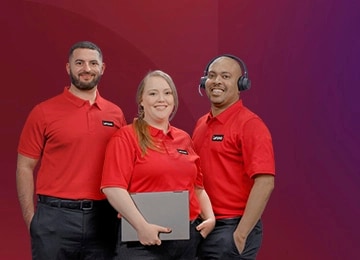What is a SATA SSD?
A SATA SSD, or Serial ATA solid-state drive, is a type of storage device that uses the Serial ATA interface to connect to a computer. It is a form of solid-state drive that offers faster data transfer speeds and better performance compared to traditional hard disk drives (HDDs). SATA SSDs are known for their reliability, energy efficiency, and durability, making them popular choices for improving system speed and responsiveness in various computing devices.
How does a SATA SSD improve my computer's performance?
Upgrading to a SATA SSD can drastically improve your computer's performance. You'll notice faster boot times, quicker application launches, and reduced load times in games and other software. This is because SSDs have much lower latency and higher read/write speeds compared to traditional hard drives. The lack of moving parts also means that SSDs are more resilient to physical shocks, adding to their reliability. Overall, using a SATA SSD brings a snappier, more responsive experience to your daily computing tasks.
When should I consider upgrading to a SATA SSD?
You should consider upgrading to a SATA SSD if your current system feels sluggish, especially during boot-up, application launches, or file transfers. If you find that your hard drive is constantly working hard and slowing down your workflow, an SSD can provide a significant boost. Additionally, if you require greater reliability and durability in a portable device, an SSD is a smarter choice due to its lack of moving parts, which makes it less susceptible to damage from drops or movement.
Is a SATA SSD compatible with all computers?
SATA SSDs are compatible with most modern computers that have a SATA connection. Almost all desktops and laptops from the last decade support SATA interfaces, making it straightforward to swap out an old HDD for an SSD. However, it's always best to check your computer's specifications or consult the manufacturer’s documentation to ensure compatibility. In rare cases, particularly with very old computers, you may need an adapter or additional hardware to complete the installation.
What are the benefits of using a SATA SSD in a server?
Using a SATA SSD in a server provides several benefits, including faster data access speeds, reduced latency, and improved overall performance. These advantages are crucial for applications requiring quick read/write operations, such as databases and virtual machines. SSDs also consume less power and generate less heat compared to traditional hard drives, which can contribute to lower operating costs and improved reliability. By upgrading to SATA SSDs, servers can handle increased workloads more efficiently.
Would a SATA SSD be suitable for gaming?
A SATA SSD is highly suitable for gaming, offering faster load times, quicker level transitions, and an overall smoother gaming experience compared to traditional hard drives. Games installed on an SSD will start up much faster, and in-game assets will load more quickly, reducing lag and improving performance. While SATA SSDs might not match the speed of NVMe SSDs, they still provide a substantial improvement over HDDs and are often more budget-friendly for gamers looking to enhance their setup.
What is the difference between a SATA SSD and an NVMe SSD?
The main difference between a SATA SSD and an NVMe SSD lies in their interfaces and performance. SATA SSDs use the older SATA interface, which limits their maximum speeds to around 600 MB/s. NVMe SSDs, on the other hand, use the PCIe interface, providing significantly higher speeds, often exceeding 3,000 MB/s. NVMe SSDs offer faster data transfer rates, lower latency, and better overall performance, making them ideal for high-demand applications. However, SATA SSDs are generally more affordable and still provide a substantial performance boost over traditional HDDs.
Could a SATA SSD improve my programming workflow?
Yes, a SATA SSD can significantly improve your programming workflow. Faster data access speeds mean that your development environment, code repositories, and project files load more quickly, enhancing overall productivity. Tasks like compiling code, running tests, and managing version control systems are sped up, allowing for a more efficient and responsive development process. Whether you’re working on large projects or multitasking with multiple applications, an SSD provides a noticeable improvement over traditional hard drive.
Can I use a SATA SSD in an external enclosure?
Yes, you can use a SATA SSD in an external enclosure. This setup allows you to use the SSD as an external storage device, providing the benefits of solid-state storage, such as faster data transfer rates and improved durability. External enclosures typically connect to your computer via USB, making them versatile and portable. This is a great option for expanding your storage capacity or using the SSD to transfer large files between different devices.
What size SATA SSD should I get for my computer?
The size of the SATA SSD you should get depends on your specific needs and usage patterns. For most users, a 500GB to 1TB SSD offers a good balance of storage capacity and cost. This provides ample space for the operating system, applications, and essential files, with room for media and personal projects. However, if you work with large files, such as high-resolution videos or extensive databases, you might benefit from a larger capacity SSD. Evaluate your current storage usage and future needs to determine the best size for your setup.
Can I use a SATA SSD as a boot drive?
Yes, using a SATA SSD as a boot drive is one of the most effective upgrades you can make for your computer. The fast read speeds of an SSD drastically reduce boot times, enabling your operating system to start up in seconds. Applications and system processes also load more quickly, improving overall responsiveness. Setting up your SSD as the boot drive involves installing your operating system on it, which might require a fresh installation or cloning your existing system.
Does a SATA SSD affect gaming performance?
A SATA SSD can significantly enhance gaming performance by reducing loading times, offering smoother transitions, and minimizing stutters during gameplay. Games installed on an SSD benefit from faster data retrieval, which is particularly noticeable when loading new levels or assets. While a SATA SSD may not increase frame rates directly, it contributes to an overall improved gaming experience by ensuring that data-heavy operations are executed swiftly and seamlessly.
What factors should I consider when choosing a SATA SSD?
When choosing a SATA SSD, consider factors such as capacity, speed, endurance, and price. Capacity depends on your storage needs—larger drives offer more room but cost more. Speed varies among models; higher-end SSDs provide better performance. Endurance, measured in TBW (terabytes written), indicates how much data the SSD can write over its lifespan. Lastly, consider your budget; find a balance between performance and cost that aligns with your requirements.
Would a SATA SSD be good for storing my large databases?
A SATA SSD can be very effective for storing large databases, particularly if high read/write speeds and low latency are important for your applications. SSDs improve database performance by speeding up query execution, index creation, and backup processes. While NVMe SSDs offer even higher performance, a SATA SSD provides a cost-effective solution with significant improvements over traditional hard drives. Consider your specific database workload and access patterns when deciding on the appropriate storage solution.
Are there different form factors for SATA SSDs?
Yes, SATA SSDs come in various form factors to fit different devices. The most generic form factors include the 2.5-inch drive, commonly used in desktops and laptops, and the mSATA and M.2 form factors, which are often found in ultrabooks, tablets, and compact PCs. While all these form factors use the SATA interface, they differ in physical dimensions and connectors. Ensure you choose the correct form factor compatible with your device’s storage bays or slots.
Would a SATA SSD improve software development tasks?
Using a SATA SSD can greatly improve software development tasks by speeding up file access, reducing compile times, and enhancing overall system responsiveness. Tasks like loading integrated development environments (IDEs), managing large code repositories, and running automated tests become more efficient with an SSD. The quick data access provided by SSDs helps maintain a smooth workflow, allowing developers to focus more on coding and less on waiting for processes to complete.







